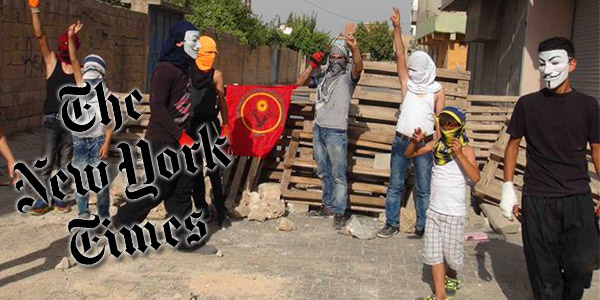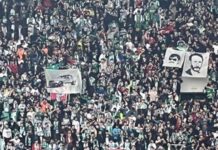Adam McConnel
Now that the more ridiculous features of the international English-language press coverage on Turkey have begun to be curtailed by criticism and fact-checking from websites such as Serbestiyet and The Kebab and Camel, it’s time to turn attention to that coverage’s deeper, more problematic characteristics that still linger, and which deserve more scrutiny. These are the issues of historical context and interpretation.
On 30 December 2015, Ceylan Yeğinsu published a lengthy article on the ongoing clashes between the PKK’s urban youth guerrillas and Turkish security forces in Turkey’s predominantly Kurdish regions, titled “Turkey’s Campaign Against Kurdish Militants Takes Toll on Civilians.” (1) Yeğinsu’s reporting finally displays better control of the basic facts, which should be commended. But there are still disturbing elements in her writing that need to be criticized.
Yeğinsu devotes the opening paragraphs of her description to the current Turkish political situation. The seventh paragraph then veers into interpretation, which quotes “analysts” as claiming that the current intense fighting between the PKK and Turkish security forces is (or originally was) “calculated political strategy by President Recep Tayyip Erdogan to strengthen support for his Justice and Development Party ahead of parliamentary elections in November.” Without noting that assertion’s error, the author instead goes on to imply that even though the AKP won the election, the strategy didn’t work since the fighting became even more intense after the election. Then she adds fear-mongering by stating that the violence might spread to other areas of Turkey.
The subsequent paragraphs provide a broad and shallow overview of the current fighting between the PKK and Turkish security forces in Turkey’s Southeast. Without ever going into details about exactly what is happening, Yeğinsu tells the reader only that armed conflict is occurring. A provocative quote from Turkish President Erdoğan, victim tolls, quotes from locals that do not elucidate the situation, and anti-government accusations from two NGOs provide the content. One of the figures quoted, Aslı Aydıntaşbaş, is actually an opposition journalist, but Yeğinsu doesn’t mention this important fact to the reader. Overall, the reader receives the impression that the Turkish state is carrying out some sort of violent repression against its Kurdish citizens, even if it isn’t clear exactly what that entails.
This depiction of the ongoing conflict is only made possible by concealing the situation’s current and historical context from the reader. This goes beyond simply not mentioning the fact that the continuing violence was openly initiated last summer by the PKK and consists of an attempt to take, by force of arms, chunks of territory from the Turkish state. Yeğinsu doesn’t describe the current situation in detail because she does not want readers to know facts that might lead them to a conclusion other than the one she intends. But this, and the negative interpretation that Yeğinsu hopes the reader will come away with, is rendered plausible only through neglecting the situation’s historical and political background (2).
The fundamental reason why the PKK’s current actions are so reprehensible (outside of the fact that their decisions result in civilian deaths) is that Turkish Kurds now have the unfettered ability to work for their just political demands through the Turkish political system. There is absolutely nothing preventing this, as is clear from the fact that an openly Kurdish party now has dozens of MPs in the Turkish parliament, which makes it the third-largest party in that body. A strong commitment to democratic principles and rule of law could make the HDP and its leadership actors of historical importance for the Kurdish struggle.
Instead, the HDP has refused to grasp this opportunity and stubbornly clings to ideology, actions, and rhetoric that supply justification for political violence. And the HDP’s essential weakness is that the conditions which the HDP puts forward as justifying its stance, in reality, no longer exist. In the past decade massive progress has been achieved concerning not only Kurdish rights but rights for all minority groups in Turkish society. This does not mean that everything is perfect or that there is nothing left to achieve; clearly much remains to be done. However, this struggle can now be carried out through democratic processes. Most of Turkish society is aware of this, as are the segments of Turkey’s Kurdish population who remain committed to democratic political effort. This awareness stems from the fact that Turkish state institutions are now changing in a fundamentally democratic manner. Only knowledge of the historical context can help observers understand the ongoing violence in Turkey’s predominantly Kurdish provinces.
NOTES
(1) http://www.nytimes.com/2015/12/31/world/europe/turkey-kurds-pkk.html?ref=europe&_r=0
(2) The most comprehensive English-language analyses of the background to the current violence in Turkey’s Southeast are available on the Serbestiyet website. See, especially: Halil Berktay, “From a domestic opposition leader, to a dream of becoming prime minister for Bakur-Rojava (1)” (3rd January 2016) and “On the way to Bakur-Rojava (2) How did the PKK decide to go back to war?” (6th January 2015).













